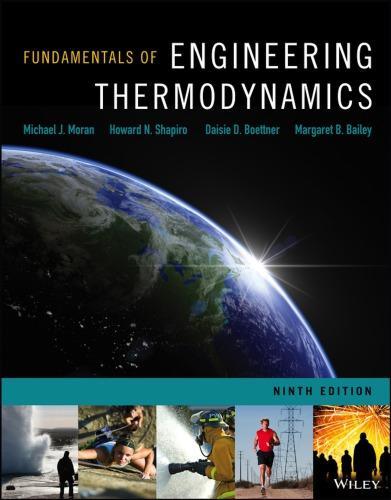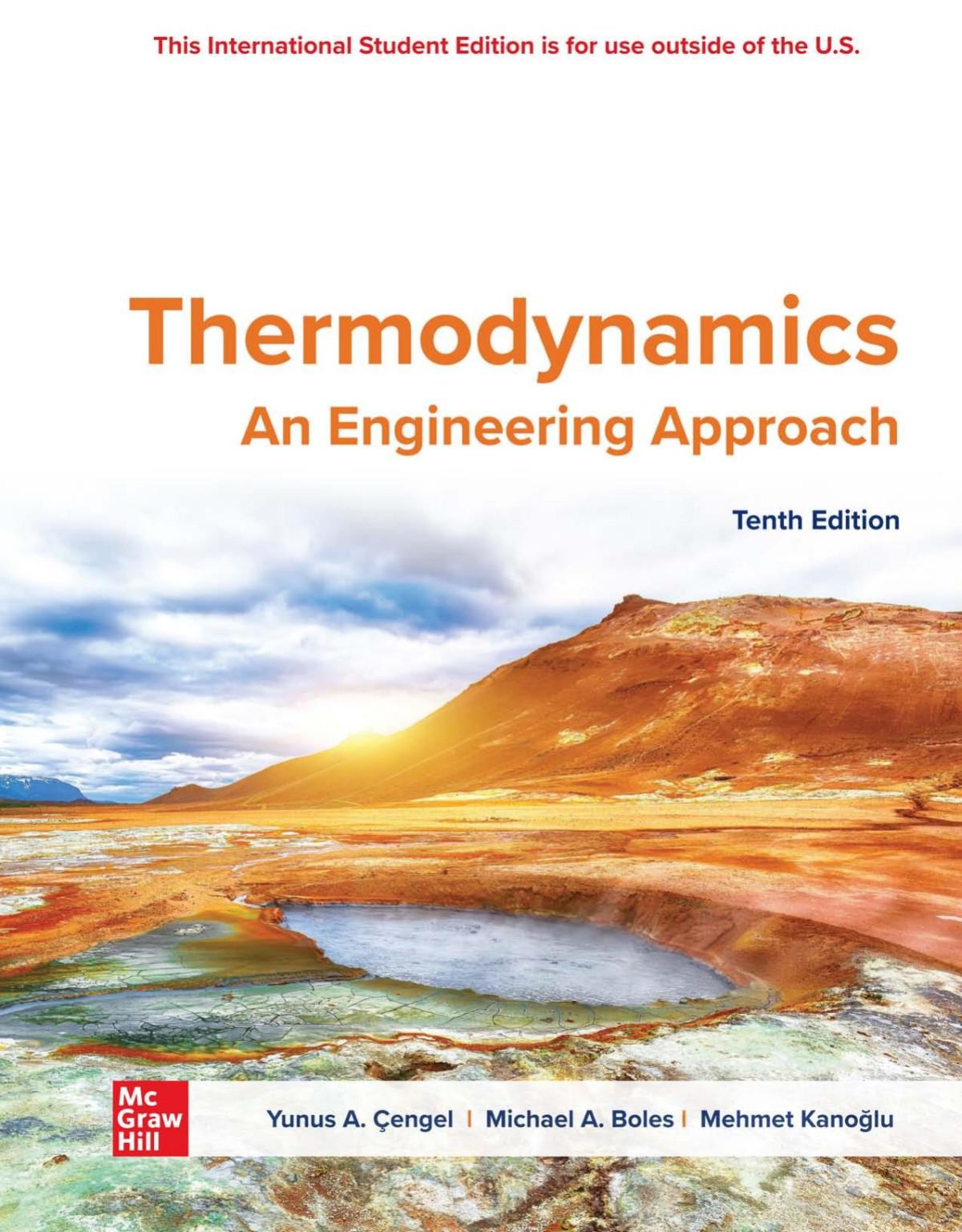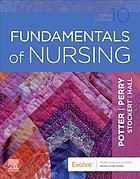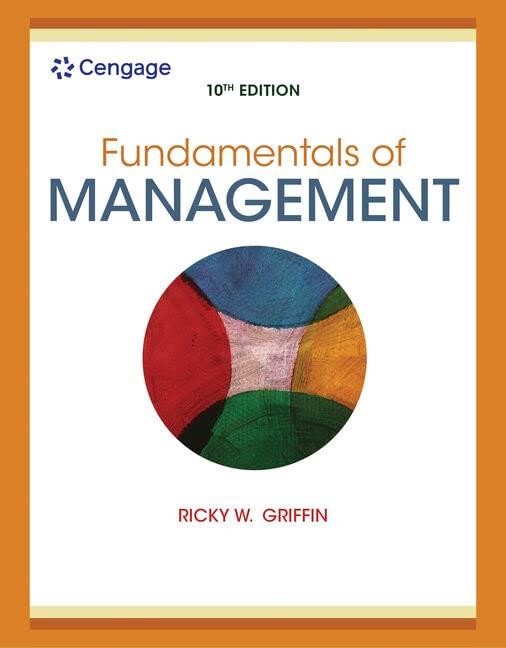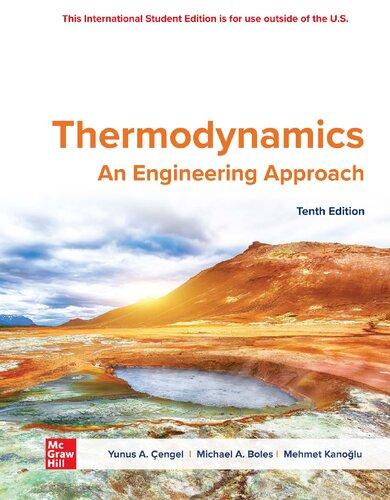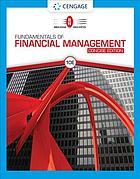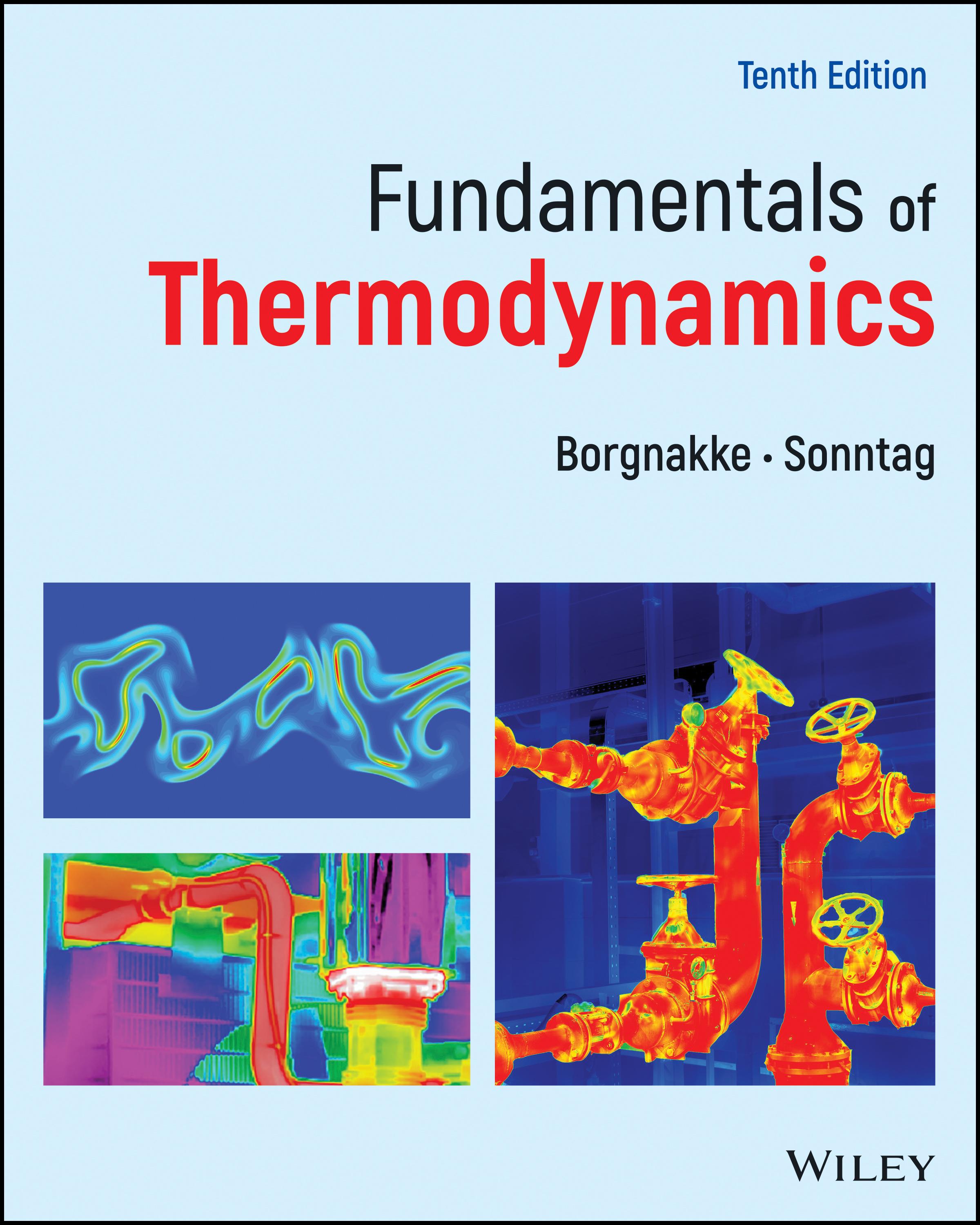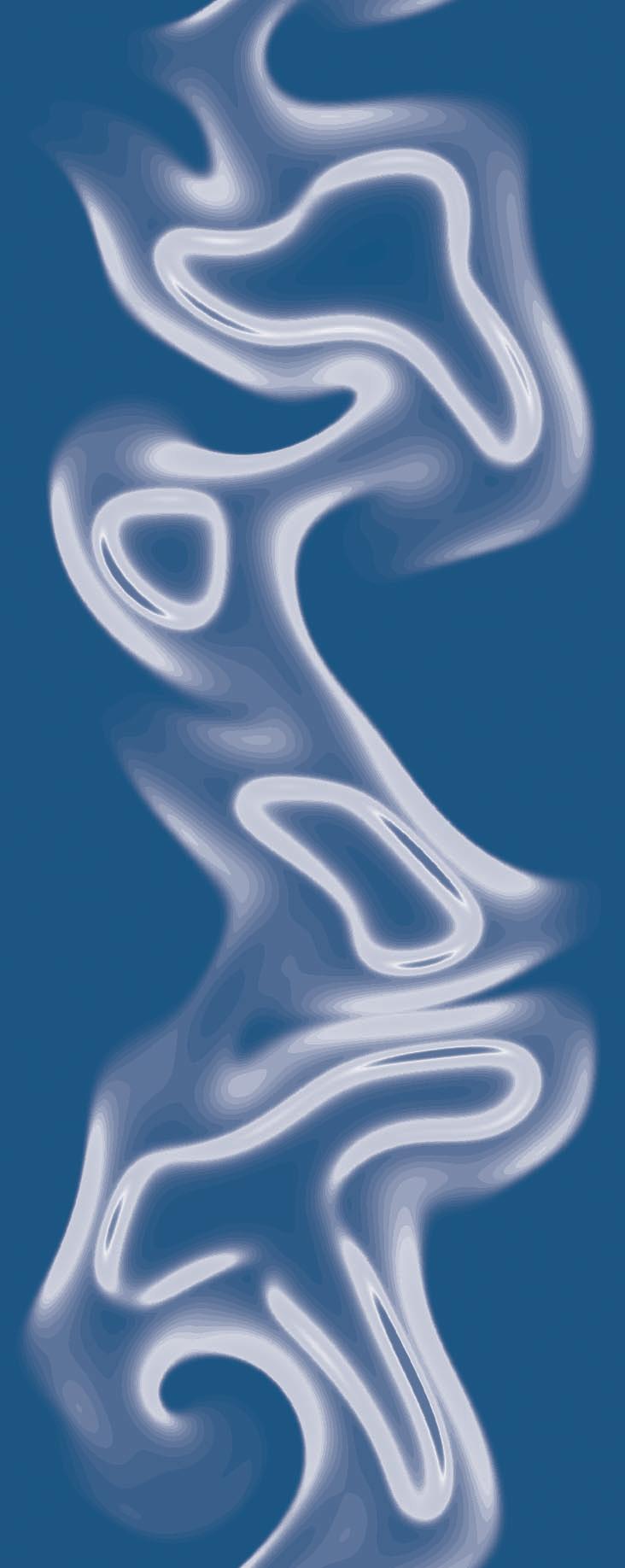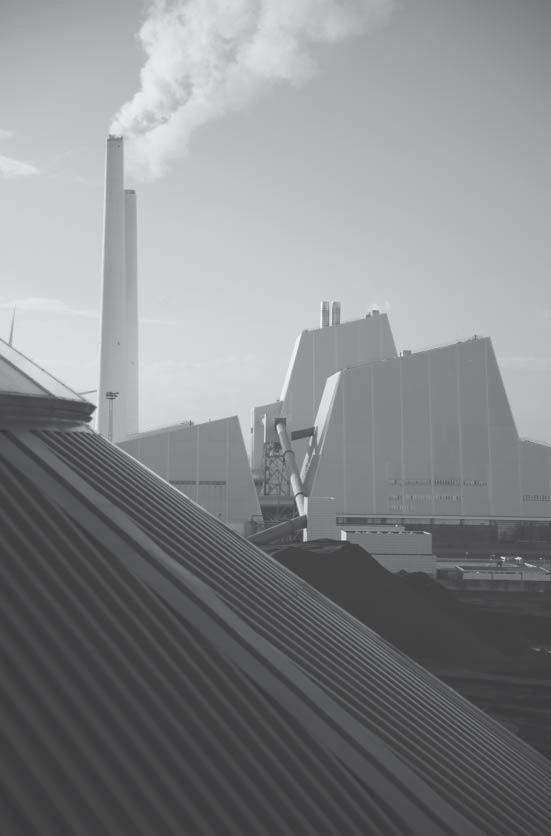Preface
Inthistentheditionthebasicobjectiveoftheearliereditionshavebeenretained:
•topresentacomprehensiveandrigoroustreatmentofclassicalthermodynamics whileretaininganengineeringperspective,andindoingso
•tolaythegroundworkforsubsequentstudiesinsuchfieldsasfluidmechanics,heat transfer,andstatisticalthermodynamics,andalso
•topreparethestudenttoeffectivelyusethermodynamicsinthepracticeofengineering.
Thepresentationisdeliberatelydirectedtostudents.Newconceptsanddefinitions arepresentedinthecontextwheretheyarefirstrelevantinanaturalprogression.Theintroductionhasbeenreorganizedwithaveryshortintroductionfollowedbythefirstthermodynamicpropertiestobedefined(Chapter1)whicharethosethatcanbereadilymeasured: pressure,specificvolume,andtemperature.InChapter2,tablesofthermodynamicpropertiesareintroduced,butonlyinregardtothesemeasurableproperties.Internalenergyand enthalpyareintroducedinconnectionwiththeenergyequationandthefirstlaw,entropy withthesecondlaw,andtheHelmholtzandGibbsfunctionsinthechapteronthermodynamicrelations.Manyrealworldrealisticexamplesandcontemporarytopicshavebeen includedinthebooktoassistthestudentingaininganunderstandingofthermodynamics, andtheproblemsattheendofeachchapterhavebeencarefullysequencedtocorrelate withthesubjectmatter,andaregroupedandidentifiedassuch.Theearlychaptersinparticularcontainalargenumberofexamples,illustrationsandproblems,andthroughoutthe book,chapter-endsummariesareincluded,followedbyasetofconcept/studyproblems thatshouldbeofbenefittothestudents.
NEWFEATURESANDOVERALLBOOK ORGANIZATION
Thetentheditioncompletesthetransitiontothee-bookformatthatwasstartedwiththe ninthedition.Thisincludesafullysearchabletext,selectinteractivity,andconvenientdirect accesstosupplementalmaterial.Theprimaryinteractiveelementisthesetofnewstudent practiceproblemsforwhichstudentscanrevealthesolutionswithasimpleclickortap. Theseproblemsexpandtheexamplesbeyondthoseinthemainchaptertextandallowsstudentstoimmediatelytesttheirknowledge.Thedigitalformatalsoenablesstudentstoaccess supplementalnotesandfilesdirectlyfromthetext.(Supplementalmaterialsalsoareavailablefromthecompanionwebsite:www.wiley.com/go/borgnakke/FundofThermo10e.)
Thee-bookorganizationincludes:
•Problems,includingbothstudentpracticeproblemswiththesolutionasadrop downselectiontogetherwithregularhomeworkproblems
•Chaptersummaryandskillsetsincludesanewstudentstudyguidetable
•Themainexpositorytextendswithaconceptlistandequationsforeachchapter
•Additionalstudyresources,suchasextrastudentproblemsandhow-tonotes
•Linkstoappendicesandotherreferencetables
Thee-bookalsoisavailablebundledwithanabridgedprintcompanionthatincludes themainexpositorytextforChapters1-10andtheappendices.Problemsarenotincluded intheprintcompanion.
ChapterReorganizationandRevisions
Themajorityofthechangesforthetentheditionhavebeentoshortensomeofthepresentationsandtoreducetheamountofmathematicalderivationsofthetheory.Materialincluding derivationsthatcontributetotheunderstandingofthesubjecthavebeenleftinthetext. Manyoftheexampleshavebeenshortenedandtheyincludetheunitsandtheirconversions withoutbeingtoorepetitiveinthepresentationkeepingthedublicationofsomeexamples toshowtheuseofenglishunits.Theapplicationsectionsintheendofthechaptershave beenexpandedsomewhattoemphasizetherealworldexamplesofdevicesandprocesses forwhichthissubjectisimportantintheiranalysisanddesign.
Chapters1stillcontainsthemostimportantconceptsfromphysicsandtheconceptsof thethermodynamicpropertiesthatdescribestheconditionofthesubstancethatisincluded intheanalysis.Tohavethetoolsfortheanalysistheorderofthepresentationhasbeenkept fromthepreviouseditionssothebehaviorofpuresubstancesispresentedinchapter2with aslightexpansionandseparationofthedifferentdomainsforsolid,liquidandgasphase behavior.ThoughtheintroductionofthepropertyprogramCATT3hasbeenleftoutthe programisstillavailablefromWiley’sweb-sitethatisrelatedtothisbook.
Chapter3containsthefirstmajorchangenamelytoincludeadescriptionofthe energyresourcesweconsumeandthetypicalenergyconversionsthatareusedinmodernsocieties.Togetherwiththementioningofrenewableenergyresourcesandtheenduse ofenergyitprovidesabetterbackgroundforallthesubsequentprocessesanddetailsthat westudy.Ashortdescriptionofenergystoragesystemsandsomeoftheenergytransfer processesdevicesarealsopresentedaccompaniedbysmalltableswithtypicalnumbers forsuchdevices.Studentstypicallyhaveonlyvagueideasaboutthesizeofmanyofthe devicesandprocesseswestudy.Thismaterialiscoveredunderapplicationsinchapter3 aftertheintroductionoftheenergyequation.Thefollowingchaptersdealswithanalysis ofprocessesanddeviceswhichrelatestothisandalsoincludeaspecialsectionofthe homeworkproblemswhereapprobriate.Byhighlightingthismaterialearlyitcanserveas amotivatingfactortostudythesubsequentmaterialwheretheuseandneedforthetheory becomesevident.SuggestedhomeworkthatcanbeincludedinassignmentsforthiscategoryarealsoavailableonWiley’swebsiteforthebookforthosethatdesiretoemphasize theenergyconversionandconservationsubjects.
Thebalanceequationsformass,momentum,energyandentropyfollowthesame formattoshowtheuniformityinthebasicprinciplesandmaketheconceptsomethingto beunderstoodandnotmerelymemorized.Thisisalsothereasontousethenameenergy
equationandentropyequationforthefirstandsecondlawofthermodynamicstostress theyareuniversallyvalidnotjustusedinthefieldofthermodynamicsbutapplytoall situationsandfieldsofstudywithnoexceptions.Clearly,specialcasesrequiresextensions notcoveredinthistext,butafewofthesehavebeenaddedinChapter12togetherwiththe thermodynamicpropertyrelations.
Theenergyequationappliedtoageneralcontrolvolmeisretainedfromtheprevious editionthatincludedasectionwithmulti-flowdevices.Againthisisdonetoreinforceto studentsthattheanalysisisdonebyapplyingthebasicprinciplestosystemsunderinvestigation.Thismeanstheactualmathematicalformofthegenerallawsfollowsthesketches andfiguresofthesystemandtheanalysisisnotaquestionaboutfindingasuitableformula inthetext.Asmalltableisaddedintheendtogivestudentssomesenseoftherelative magnitudeofflowdevicesintermsoftheenergytransferperunitmass.
Thehistoricaldevelopmentofthesecondlawofthermodynamicsinchapter5has beenexpandedtoincludethein-equalityofClausius.Thischapterthenincludesallthehistoricalstatementsofthesecondlawsochapter6exclusivelydealswiththeentropyequation. Toshowthegeneralityoftheentropyequationasmallexampleiswrittenupapplyingthe energyandentropyequationstoheatenginesandheatpumpssoitcanbedemonstratedthat thehistoricalpresentationofthesecondlawinChapter5canbecompletelysubstitutedwith thepostulationoftheentropyequationandtheexistenceoftheabsolutetemperaturescale. Carnotcycleefficienciesandthefactthatrealdeviceshavelowerefficiencyfollowsfrom thebasicgenerallaws.Alsothedirectionofheattransferfromahighertemperaturedomain towardsalowertemperaturedomainispredictedbytheentropyequationduetotherequirementofapositiveentropygeneration.Theseareexamplesthatpracticetheapplicationof thegenerallawsforspecificcasesandimprovesthestudentsunderstandingofthematerial.
Theapplicationsectioninchapter7hasbeenexpandedalittletoincludesome descriptionofintercoolersandreheatersasameanofenergyconservationandefficiency improvements.Thedeviceefficienciesisalsoplacedhereasanapplicationoftheentropy equationandthiswholesectionhasabout30homworkproblemsassociatedwithit.The generalsummaryofthecontrolvolumeanalysishasbeenremovedandwillbeavailable on-linefromWileywebsite.
Exergyinchapter8hasbeenshortenedalittletoreducethemathematicalmanipulationoftheequationsandasmallapplicationsectionwiththesecondlawefficiencyfor cycleshavebeenaddedtoillustrateanimportantaspectofitsuse.AmoredetaileddiscussionofthisisnowincludedasaseparatesectioninChapter9.
Thechapterswithcyclesareexpandedwithafewdetailsforspecificcyclesandsome extensionsshowntotiethetheorytoindustrialapplicationswithrealsystems.TheexpressionforcycleefficiencyisnowincludedfortheStirling,AtkinsonandMillercyclesto showthattheyallarerelatedtocompressionandexpansionratios.
Thepropertyrelationsinchapter12hasbeenupdatedtoincludeeffectsofdilution andfugacityformixturesandasaspecialapplicationtheeffectofasurfacetensionis includedunderengineeringapplications.Thisrevisionhasalsoremovedtheoldermethod fordevelopmentofthermodynamictablesandnowonlyinlcudestheHelmholtzfunction baseddevelopment.
Web-BasedMaterial
Althoughmostofthesupplementalmaterialforthiseditionofthebookisaccessibledirectly orbylinksfromthee-book,severaldocumentsalsoareavailablefromWiley’swebsitefor thebook.Thefollowingmaterialwillbeaccessibleforstudentsthroughlinkstothebook
companionsiteandadditionalmaterialreservedforinstructorsofthecoursewillalsobyat Wiley’sbookcompanionsite.
Notesforclassicalthermodynamics. Averyshortsetofnotescoversthebasicthermodynamicanalysiswiththegenerallaws(continuity,energyandentropyequations)and someofthespecificlawslikedeviceequations,processequations,etc.Thisisusefulfor studentsdoingreviewofthecourseorforexampreparationasitgivesacomprehensive presentationinacondensedform.
GeneralControlVolumeAnalysis. Thisistheshortstepbystepprocedurethatwasat theendofchapter7intheeighthedition.
Extendedsetofstudyexamples. Thisdocumentincludesaupdatedcollectionofadditionalexamplesforstudentstostudy.Theseexamplesarewrittenslightlylongerandmore detailedinthesolutionthantheexamplesprintedinthebookandthusareexcellentfor self-study.Thereareabout8SIunitproblemswith3-4englishunitproblemsforeach chaptercoveringmostofthematerialinthechapters.
How-to-notes. Frequentlyaskedquestionsarelistedforeachofthesetofsubjectareas inthebookwithdetailedanswers.Thesearequestionsthataredifficulttohaveroomforin thebook.Examples:
HowdoIfindacertainstateforR-410AintheB-sectiontables?
HowdoImakealinearinterpolation?
ShouldIuseinternalenergy(u)orenthalpy(h)intheenergyequation?
WhencanIuseidealgaslaw?
Instructormaterial. Asetofpowerpointlectureslidesareavailable.Thesealsoinclude repeatcopiesofsomebookexampleswithspecificheatdonewiththeidealgastablesand visaversa.AdditionalenglishunitexamplesarealsolistedascopiesoftheSIunitproblemsandmodifiedifneededduetothetables.Othermaterialforinstructorscoverstypical syllabusandhomeworkassignmentsforafirstandasecondcourseinthermodynamics. Additionallyexamplesof2standard1hourmidtermexams,anda2hourfinalexamare givenfortypicalThermodynamicsIandThermodynamicsIIclasses.
FEATURESCONTINUEDFROM9TH EDITION
In-Text-ConceptQuestion
Thein-textconceptquestionsappearinthetextaftermajorsectionsofmaterialtoallow studenttoreflectoverthematerialjustpresented.Thesequestionsareintendedtobequick selftestsforstudentsorusedbyteachersaswrapupchecksforeachofthesubjectscovered andmostoftheseareemphasizingtheunderstandingofthematerialwithoutbeingmemory facts.
End-of-ChapterEngineeringApplications
Thelastsectionineachchapter,calledengineeringapplications,havebeenrevisedwith updatedillustrationsandafewmoreexamples.Thesesectionsareintendedtobemotivating materialmostlyinformativeexamplesofhowthisparticularchaptermaterialisbeingused inactualengineering.
End-of-ChapterSummarieswithMainConceptsandFormulas
Theend-of-chaptersummariesprovideareviewofthemainconceptscoveredinthechapter, withhighlightedkeywordsarenowlocatedassuplementalmaterialdirectlyaccessible fromthee-book.Theonlypartstillwiththechaptermaterialisanexpandedlistingof thekeyconceptsandtheformulasincludingequationnumbers.Thelistofskillsthatthe studentshouldhavemasteredafterstudyingthechapterispresentedtogetherwithatable ofdetailedreferencestoexamples,equationsandhomeworkproblemsforeachspecific skill.Thesemainconceptsandformulasareincludedafterthesummaryforreferenceand acollectionofthesewillbeaccessiblethroughthelinkstothebookcompanionsite.The mainsummaryofthegeneralcontrolvolumeanalysishasbeenremovedfromchapter7 andplacedtogetherwiththeonlinematerial.
Concept-StudyGuideProblems
Additionalconceptquestionsareplacedasproblemsinthefirstsectionoftheendofchapter homeworkproblems.Theseproblemsaresimilartothein-textconceptquestionsandserve asstudyguideproblemsforeachchaptertheyarealittlemorelikehomeworkproblemswith numberstoprovideaquickcheckofthechaptermaterial.Theseareselectedtobeshort anddirectedtowardaveryspecificconcept.Astudentcananswerallofthesequestionsto assesstheirlevelofunderstanding,anddetermineifanyofthesubjectsneedtobestudied further.Theseproblemsarealsosuitabletousetogetherwiththerestofthehomework problemsinassignmentsandincludedinthesolutionmanual.
HomeworkProblems
Thenumberofhomeworkproblemshasbeensignificantlyreducedbutstillcontainsintroductoryproblemsoverallaspectsofthechaptermaterialandlistedaccordingtothesubject sectionsforeasyselectionaccordingtotheparticularcoveragegivenandtheyaregenerally orderedtobeprogressivemorecomplexandinvolved.Laterproblemsinmanysectionsare relatedtorealindustrialprocessesanddevicesandlebeledunder applications or energy conservation withmorecomprehensiveproblemsretainedandgroupedas reviewproblems.Themorecomprehensiveandlengthyproblemshavebeenremovedtoconservespace. NewandmodifiedproblemsarereservedforinstructorsandavailablefromWileys websiteforthebook.
Tables
Thetablesofthesubstanceshavebeencarriedoverfromthe8th editionwith alternative refrigerantR-410A whichisthereplacementforR-22and carbondioxide whichisa naturalrefrigerant.Severalmoresubstancesareincludedinthesoftware.
FLEXIBILITYINCOVERAGEANDSCOPE
Thebookattemptstocoverfairlycomprehensivelythebasicsubjectmatterofclassical thermodynamics,andIbelievethatthebookprovidesadequatepreparationforstudyof theapplicationofthermodynamicstothevariousprofessionalfieldsaswellasforstudyof moreadvancedtopicsinthermodynamics,suchasthoserelatedtomaterials,surfacephenomena,plasmas,andcryogenics.Ialsorecognizethatanumberofcollegesofferasingle introductorycourseinthermodynamicsforalldepartments,andhavetriedtocoverthose
topicsthatthevariousdepartmentsmightwishtohaveincludedinsuchacourse.However, sincespecificcoursesvaryconsiderablyinprerequisites,specificobjectives,duration,and backgroundofthestudents,thematerialisarrangedinsections,particularlyinthelater chapters,soconsiderableflexibilityexistintheamountofmaterialthatmaybecovered. Thebookcoversmorematerialthanrequiredforatwo-semestercoursesequence, whichprovidesflexibilityforspecificchoicesoftopiccoverage.Instructorsmaywantto visitthepublisher’sWebsiteatwww.wiley.com/go/borgnakke/FundofThermo10eforinformationandsuggestionsonpossiblecoursestructureandschedules,andtheadditional materialmentionedasWeb-materialwhichwillbeupdatedtoincludecurrenterratafor thebook.
FlexibilitywithHWsimpleandextendedproblemstosatisfydepthandtimerequirementsExamplesofthisareconstantspecificheatquestionextendedtobewithvariable specificheats(gastables),apistoncylinderincludesthemetalmassbesidesthecontained mass,someproblemsarealsoinenglishunits.Manyproblemsfromearlierchaptersare repeatedwhenentropyisaddedtotheanalysis.
ACKNOWLEDGEMENTS
Iacknowledgewithappreciationthesuggestions,counsel,andencouragementofmany colleagues,bothattheUniversityofMichiganandelsewhere.Thisassistancehasbeen veryhelpfultomeduringthewritingofthisedition,asitwaswiththeearliereditionsof thebook.Bothundergraduateandgraduatestudentshavebeenofparticularassistance,for theirperceptivequestionshaveoftencausedmetorewriteorrethinkagivenportionofthe text,ortotrytodevelopabetterwayofpresentingthematerialinordertoanticipatesuch questionsordifficulties.Finally,theencouragementandpatienceofmywifeandfamily havebeenindispensable,andhavemadethistimeofwritingpleasantandenjoyable,in spiteofthepressuresoftheproject.Aspecialthankstoanumberofcolleaguesatother institutionswhohavereviewedtheearliereditionsofthebookandprovidedinputtothe revisions.Someofthereviewersare
RuhulAmin,MontanaStateUniversity
EdwardE.Anderson,TexasTech.University
CoryBerkland,UniversityofKansas
EugeneBrown,VirginiaPolytechnicInstituteandStateUniversity
SungKwonCho,UniversityofPittsburgh
SarahCodd,MontanaStateUniversity
RamDevireddy,LouisianaStateUniversity
FokionEgolfopoulos,UniversityofSouthernCalifornia
HarryHardee,NewMexicoStateUniversity
HongHuang,WrightStateUniversity
SatishKetkar,WayneStateUniversity
BorisKhusid,NewJerseyInstituteofTechnology
JosephF.Kmec,PurdueUniversity
RoyW.Knight,AuburnUniversity
DanielaMainardi,LouisianaTechUniversity
RandallManteufel,UniversityofTexas,SanAntonio
JosephPowers,NotreDameUniversity
HarryJ.Sauer,Jr.,MissouriUniversityofScienceandTechnology
J.A.Sekhar,UniversityofCincinnati
AhnedSoliman,UniversityofNothCarolina,Charlotte
RezaToossi,CaliforniaStateUniversity,LongBeach
ThomasTwardowski,WidenerUniversity
EtimU.Ubong,KetteringUniversity
YanhuaWu,WrightStateUniversity
WalterYuen,UniversityofCaliforniaatSantaBarbara
IalsowishtothanktheeditorChrisNelsonfortheencouragementandhelpduringthe productionofthisedition.
Ihopethatthisbookwillcontributetotheeffectiveteachingofthermodynamicsto studentswhofaceverysignificantchallengesandopportunitiesduringtheirprofessional careers.Yourcomments,criticism,andsuggestionswillalsobeappreciatedandyoumay communicatethosetomeatclaus@umich.edu.
ClausBorgnakke AnnArbor,Michigan October2018
1 IntroductionandPreliminaries 1
1.1AThermodynamicSystemandtheControlVolume, 2
1.2MacroscopicVersusMicroscopicPointsofView, 5
1.3PropertiesandStateofaSubstance, 6
1.4ProcessesandCycles, 6
1.5UnitsforMass,Length,Time,andForce, 7
1.6SpecificVolumeandDensity, 10
1.7Pressure, 13
1.8Energy, 20
1.9EqualityofTemperature, 22
1.10TheZerothLawofThermodynamics, 22
1.11TemperatureScales, 23
1.12EngineeringApplications, 24
2 PropertiesofaPureSubstance 29
2.1ThePureSubstance, 30
2.2ThePhaseBoundaries, 30
2.3The P–v–T Surface, 34
2.4TablesofThermodynamicProperties, 36
2.5TheTwo-PhaseStates, 39
2.6TheLiquidandSolidStates, 41
2.7TheSuperheatedVaporStates, 43
2.8TheIdealGasStates, 46
2.9TheCompressibilityFactor, 49
2.10EquationsofState, 54
2.11EngineeringApplications, 55
3 EnergyEquationandFirstLawof Thermodynamics 58
3.1TheEnergyEquation, 58
3.2TheFirstLawofThermodynamics, 61
3.3TheDefinitionofWork, 62
3.4WorkDoneattheMovingBoundaryofaSimpleCompressible System, 67
3.5DefinitionofHeat, 75
3.6HeatTransferModes, 76
3.7InternalEnergy—AThermodynamicProperty, 78
3.8ProblemAnalysisandSolutionTechnique, 80
3.9TheThermodynamicPropertyEnthalpy, 86
3.10TheConstant-VolumeandConstant-PressureSpecificHeats, 89
3.11TheInternalEnergy,Enthalpy,andSpecificHeatofIdeal Gases, 90
3.12NonuniformDistributionofStatesandMass, 97
3.13TheTransientProcess, 98
3.14GeneralSystemsthatInvolveWork, 100
3.15EngineeringApplications, 102
4 EnergyAnalysisforaControlVolume 111
4.1ConservationofMassandtheControlVolume, 111
4.2TheEnergyEquationforaControlVolume, 114
4.3TheSteady-StateProcess, 116
4.4ExamplesofSteady-StateProcesses, 118
4.5Multiple-FlowDevices, 129
4.6TheTransientFlowProcess, 131
4.7EngineeringApplications, 137
5 TheSecondLawofThermodynamics 143
5.1HeatEnginesandRefrigerators, 143
5.2TheSecondLawofThermodynamics, 149
5.3TheReversibleProcess, 151
5.4FactorsthatRenderProcessesIrreversible, 153
5.5TheCarnotCycle, 156
5.6TwoPropositionsRegardingtheEfficiencyofaCarnotCycle, 157
5.7TheThermodynamicTemperatureScale, 159
5.8TheIdealGasTemperatureScale, 159
5.9IdealVersusRealMachines, 161
5.10TheInequalityofClausius, 165
5.11EngineeringApplications, 169
6 Entropy 173
6.1Entropy—APropertyofaSystem, 173
6.2TheEntropyofaPureSubstance, 175
6.3EntropyChangeinReversibleProcesses, 177
6.4TheThermodynamicPropertyRelation, 181
6.5EntropyChangeofaSolidorLiquid, 182
6.6EntropyChangeofanIdealGas, 183
6.7TheReversiblePolytropicProcessforanIdealGas, 187
6.8EntropyChangeofaControlMassDuringanIrreversible Process, 191
6.9EntropyGenerationandtheEntropyEquation, 192
6.10PrincipleoftheIncreaseofEntropy, 194
6.11EntropyasaRateEquation, 197
6.12SomeGeneralCommentsAboutEntropyandChaos, 202
7
EntropyAnalysisforaControlVolume 206
7.1TheEntropyEquationforaControlVolume, 206
7.2TheSteady-StateProcessandtheTransientProcess, 207
7.3TheSteady-StateSingle-FlowProcess, 216
7.4PrincipleofTheIncreaseofEntropy, 220
7.5EngineeringApplications;EnergyConservationandDevice Efficiency, 224
8
Exergy 231
8.1Exergy,ReversibleWork,andIrreversibility, 231
8.2ExergyandItsBalanceEquation, 243
8.3TheSecondLawEfficiency, 248
8.4EngineeringApplications, 253
9
PowerandRefrigerationSystems—WithPhase Change 256
9.1IntroductiontoPowerSystems, 257
9.2TheRankineCycle, 258
9.3EffectofPressureandTemperatureontheRankineCycle, 261
9.4TheReheatCycle, 265
9.5TheRegenerativeCycleandFeedwaterHeaters, 266
9.6DeviationofActualCyclesfromIdealCycles, 272
9.7CombinedHeatandPower:OtherConfigurations, 276
9.8IntroductiontoRefrigerationSystems, 278
9.9TheVapor-CompressionRefrigerationCycle, 279
9.10WorkingFluidsforVapor-CompressionRefrigeration Systems, 282
9.11DeviationoftheActualVapor-CompressionRefrigerationCycle fromtheIdealCycle, 283
9.12RefrigerationCycleConfigurations, 284
9.13TheAbsorptionRefrigerationCycle, 287
9.14ExergyAnalysisofCycles, 288
10 PowerandRefrigerationSystems—Gaseous WorkingFluids 293
10.1Air-StandardPowerCycles, 293
10.2TheBraytonCycle, 294
10.3TheSimpleGas-TurbineCyclewithaRegenerator, 300
10.4Gas-TurbinePowerCycleConfigurations, 302
10.5TheAir-StandardCycleforJetPropulsion, 306
10.6TheAir-StandardRefrigerationCycle, 309
10.7ReciprocatingEnginePowerCycles, 312
10.8TheOttoCycle, 314
10.9TheDieselCycle, 317
10.10TheStirlingCycle, 320
10.11TheAtkinsonandMillerCycles, 321
10.12Combined-CyclePowerandRefrigerationSystems, 324
SummaryObjectives(Availableine-textfor students) S-1
StudyguideandChapterStudyResources (Availableine-textforstudents) R-1
Chapters11–15(Availableine-textfor students) W-1
Problems(Availableine-textforstudents) P-1
ContentsofAppendix A-1
AppendixASIUnits:Single-StateProperties A-3
AppendixBSIUnits:ThermodynamicTables A-23
AppendixCIdealGasSpecificHeat A-73
AppendixDEquationsofState A-75
AppendixEFigures A-80
AppendixFEnglishUnitTables A-85
Index I-1
Symbols
a acceleration
A area
a, A specificHelmholtzfunctionandtotalHelmholtzfunction
AF air-fuelratio
BS adiabaticbulkmodulus
BT isothermalbulkmodulus
c velocityofsound
cmassfraction
CD coefficientofdischarge
Cp constant-pressurespecificheat
Cv constant-volumespecificheat
Cpo zero-pressureconstant-pressurespecificheat
Cvo zero-pressureconstant-volumespecificheat
COPcoefficientofperformance
CRcompressionratio
e, E specificenergyandtotalenergy
EMFelectromotiveforce,electricalpotential,volt
ERexpansionratio
f fugacity,pseudopressure
FFaradaysconstant
F force,alsotension
FA fuel-airratio
g accelerationduetogravity
g, G specificGibbsfunctionandtotalGibbsfunction
h, H specificenthalpyandtotalenthalpy
HR,HPenthalpyofreactantsandenthalpyofproducts
HVheatingvalue
i electricalcurrent
i,I specifcandtotalirreversibility
k conductivity
k specificheatratio: Cp /Cv
K equilibriumconstant
ke,KEspecificandtotalkineticenergy
L length
m mass
m massflowrate
M molecularmass
M Machnumber
n numberofmoles
GreekLetters
n polytropicexponent
P pressure
Pi partialpressureofcomponent i inamixture
pe,PEspecificandtotalpotentialenergy
Pr reducedpressure P/Pc
Pr relativepressureasusedingastables
q, Q heattransferperunitmassandtotalheattransfer
̇ Q rateofheattransfer
QH , QL
heattransferwithhigh-temperaturebodyandheattransferwith low-temperaturebody;signdeterminedfromcontext
R gasconstant
R universalgasconstant
s, S specificentropyandtotalentropy
Sgen entropygeneration
̇
Sgen rateofentropygeneration
t time
T temperature
Tr reducedtemperature T/Tc
u, U specificinternalenergyandtotalinternalenergy
v, V specificvolumeandtotalvolume
vr relativespecificvolumeasusedingastables
V velocity
w, W workperunitmassandtotalwork
W rateofwork,power
wrev specificreversibleworkbetweentwostates
x quality
y gas-phasemolefraction
y extractionfraction
Z elevation
Z compressibilityfactor
Z electricalcharge
�� residualvolume
�� dimensionlessHelmholtzfunctiona/RT
�� p volumeexpansivity
�� coefficientofperformanceforarefrigerator
��
′ coefficientofperformanceforaheatpump
�� S adiabaticcompressibility
�� T isothermalcompressibility
�� dimensionlessdensity ��/��c
�� efficiency
�� chemicalpotential
�� stoichiometriccoefficient
�� density
�� surfacetension(F/L),surfaceenergy(E/A)
�� Stefan-Boltzmanconstant
�� dimensionlesstemperaturevariable Tc /T
�� 0 dimensionlesstemperaturevariable1 Tr
Subscripts
Superscripts
Φ equivalenceratio
�� relativehumidity
��, Φ exergyoravailabilityforacontrolmass
�� specificexergy,flowavailability
�� humidityratioorspecifichumidity
�� acentricfactor
c propertyatthecriticalpoint
c.v.controlvolume
e stateofasubstanceleavingacontrolvolume
f formation
f propertyofsaturatedliquid
fg differenceinpropertyforsaturatedvaporandsaturatedliquid
g propertyofsaturatedvapor
i stateofasubstanceenteringacontrolvolume
i propertyofsaturatedsolid
if differenceinpropertyforsaturatedliquidandsaturatedsolid
ig differenceinpropertyforsaturatedvaporandsaturatedsolid
r reducedproperty
s isentropicprocess
0propertyofthesurroundings
0stagnationproperty
–—baroversymboldenotespropertyonamolalbasis(over V, H, S, U, A, G,the bardenotespartialmolalproperty)
∘ propertyatstandard-statecondition
*idealgas
*propertyatthethroatofanozzle irrirreversible rrealgaspart revreversible
CHAPTER1PROBLEMS
Studentsolutionavailableininteractivee-text.
CONCEPT-STUDYGUIDEPROBLEMS
1.1 Separatethelist P, F, V, v, ��, T, a, m, L, t,and V into intensiveproperties,extensiveproperties,andnonproperties.
1.2 Atrayofliquidwaterisplacedinafreezerwhereit coolsfrom20to 5∘ C.Showtheenergyflow(s)and storageandexplainwhatchanges.
1.3 Theoveralldensityoffibers,rockwoolinsulation, foams,andcottonisfairlylow.Why?
1.4 Isdensityauniquemeasureofmassdistributionin avolume?Doesitvary?Ifso,onwhatkindofscale (distance)?
1.5 Waterinnatureexistsinthreedifferentphases:solid, liquid,andvapor(gas).Indicatetherelativemagnitudeofdensityandthespecificvolumeforthethree phases.
1.6 Whatistheapproximatemassof1Lofgasoline?Of heliuminaballoonat T0 , P0 ?
1.7 Canyoucarry1m3 ofliquidwater?
1.8 Aheavyrefrigeratorhasfourheight-adjustablefeet. Whatfeatureofthefeetwillensurethattheydonot makedentsinthefloor?
1.9 Aswimmingpoolhasanevenlydistributedpressure atthebottom.Considerastiffsteelplatelyingonthe
HOMEWORKPROBLEMS
Properties,Units,andForce
1.18 Onekilopond(1kp)istheweightof1kginthestandardgravitationalfield.Whatistheweightof1kgin newtons(N)?
1.19 Astainlesssteelstoragetankcontains5kgofcarbondioxidegasand7kgofargongas.Howmany kmolesareinthetank?
ground.Isthepressurebelowitjustasevenlydistributed?
1.10 Ifsomethingfloatsinwater,whatdoesitsayabout itsdensity?
1.11 Twodiversswimatadepthof20m.Oneofthem swimsdirectlyunderasupertanker;theotheravoids thetanker.Whofeelsagreaterpressure?
1.12 Anoperatingroomhasapositivegagepressure, whereasanenginetestcellhasavacuum;whyisthat?
1.13 Awaterskierdoesnotsinktoofardowninthewater ifthespeedishighenough.Whatmakesthatsituation differentfromourstaticpressurecalculations?
1.14 WhatisthelowesttemperatureindegreesCelsius? IndegreesKelvin?
1.15 HowcoldcanitbeonEarthandinemptyspace?
1.16 Athermometerthatindicatesthetemperaturewith aliquidcolumnhasabulbwithalargervolumeof liquid.Why?
1.17 Howcanyouillustratethebindingenergybetween thethreeatomsinwaterastheysitinatriatomicwater molecule. Hint: imaginewhatmusthappentocreate threeseparateatoms.
1.21 TheRoverExplorerhasamassof185kg,how muchdoesthisweighontheMoon(g = gstd /6)and onMarswhere g = 3.75m/s2
1.22 A1700kgcarmovingat80km/hisdeceleratedat aconstantrateof4m/s2 toaspeedof20km/h.What aretheforceandtotaltimerequired?
1.20 Asteelcylinderofmass4kgcontains4Lofwater at25∘ Cat100kPa.Findthetotalmassandvolume ofthesystem.Listtwoextensiveandthreeintensive propertiesofthewater.
1.23 Theelevatorinahotelhasamassof750kg,and itcarriessixpeoplewithatotalmassof450kg.How muchforceshouldthecablepullupwithtohavean accelerationof1m/s2 intheupwarddirection?
1.24 Oneofthepeopleinthepreviousproblemweighs 80kgstandingstill.Howmuchweightdoesthispersonfeelwhentheelevatorstartsmoving?
SpecificVolume
1.25 A1-m3 containerisfilledwith400kgofgranite stone,200kgofdrysand,and0.2m3 ofliquid25∘ C water.UsingpropertiesfromTablesA.3andA.4,find theaveragespecificvolumeanddensityofthemasses whenyouexcludeairmassandvolume.
1.26 Apowerplantthatseparatescarbondioxidefrom theexhaustgasescompressesittoadensityof 110kg/m3 andstoresitinanunminablecoalseam withaporousvolumeof100000m3 .Findthemass thatcanbestored.
1.27 A5-m3 containerisfilledwith900kgofgranite (densityof2400kg/m3 ).Therestofthevolumeisair, withdensityequalto1.15kg/m3 .Findthemassofair andtheoverall(average)specificvolume.
Pressure
1.28 A5000-kgelephanthasacross-sectionalareaof 0.02m2 oneachfoot.Assuminganevendistribution, whatisthepressureunderitsfeet?
1.29 AvalveinthecylindershowninFig.P1.29has across-sectionalareaof11cm2 withapressureof 735kPainsidethecylinderand99kPaoutside.How largeaforceisneededtoopenthevalve?
holdingthemasslesspistonupasthepistonlowerside has P0 besidestheforce.
1.31 Ahydrauliclifthasamaximumfluidpressureof 500kPa.Whatshouldthepiston/cylinderdiameterbe inordertoliftamassof850kg?
1.32 Ahydrauliccylinderhasa125-mmdiameterpiston withanambientpressureof1bar.Assumingstandard gravity,findthetotalmassthispistoncanliftifthe insidehydraulicfluidpressureis2500kPa.
1.33 A75-kghumantotalfootprintis0.05m2 whenthe humaniswearingboots.Supposethatyouwantto walkonsnowthatcanatmostsupportanextra3kPa; whatshouldthetotalsnowshoeareabe?
1.34 Apiston/cylinderwithacross-sectionalareaof 0.01m2 hasapistonmassof65kgplusaforceof 800Nrestingonthestops,asshowninFig.P1.34. Withanoutsideatmosphericpressureof101kPa,what shouldthewaterpressurebetoliftthepiston?
1.30 ThepistoncylinderinFig.P1.29hasadiameter of10cm,insidepressure735kPa.Whatistheforce
1.35 A2.5-m-tallsteelcylinderhasacross-sectionalarea of1.5m2 .Atthebottom,withaheightof0.5m,is liquidwater,ontopofwhichisa1-m-highlayerof engineoil.ThisisshowninFig.P1.35.Theoilsurfaceisexposedtoatmosphericairat101kPa.Whatis thehighestpressureinthewater?
FigureP1.29
FigureP1.34
FigureP1.35
1.36 Anunderwaterbuoyisanchoredattheseabedwith acable,anditcontainsatotalmassof250kg.What shouldthevolumebesothatthecableholdsitdown withaforceof1000N?
1.37 Afloatingoilrigisanchoredintheseabedwith cablesgivinganetpullof10000kNdown.Howlarge awaterdisplacementvolumedoesthatleadto?
1.38 Atthebeach,atmosphericpressureis1025mbar. Youdive15mdownintheocean,andyoulaterclimb ahillupto450minelevation.Assumethatthedensity ofwaterisabout1000kg/m3 ,andthedensityofairis 1.18kg/m3 .Whatpressuredoyoufeelateachplace?
1.39 Asteeltankofcross-sectionalarea3m2 andheight 16mweighs10000kgandisopenatthetop,asshown inFig.P1.39.Wewanttofloatitintheoceansothatit ispositioned10mstraightdownbypouringconcrete intoitsbottom.Howmuchconcreteshouldweuse?
1.44 Thedensityofatmosphericairisabout1.15kg/m3 , whichweassumeisconstant.Howlargeanabsolute pressurewillapilotencounterwhenflying2000m abovegroundlevel,wherethepressureis101kPa?
1.45 Abarometertomeasureabsolutepressureshowsa mercurycolumnheightof735mm.Thetemperatureis suchthatthedensityofthemercuryis13550kg/m3 . Findtheambientpressure.
1.46 Adifferentialpressuregaugemountedonavessel shows1.25MPa,andalocalbarometergivesatmosphericpressureas0.96bar.Findtheabsolutepressure insidethevessel.
1.47 Whatpressuredifferencedoesa100-mcolumnof atmosphericairshow?
1.48 Abarometermeasures760mmHgatstreetlevel and745mmHgontopofabuilding.Howtallisthe buildingifweassumeairdensityof1.15kg/m3 ?
1.49 Anexplorationsubmarineshouldbeabletodescend 1200mdownintheocean.Iftheoceandensityis 1020kg/m3 ,whatisthemaximumpressureonthe submarinehull?
1.50 Theabsolutepressureinatankis115kPaandthe localambientabsolutepressureis102kPa.IfaU-tube withmercury(density = 13550kg/m3 )isattachedto thetanktomeasurethegaugepressure,whatcolumn heightdifferencewillitshow?
1.40 Apiston, mp = 5kg,isfittedinacylinder, A = 15 cm2 ,thatcontainsagas.Thesetupisinacentrifuge thatcreatesanaccelerationof25m/s2 inthedirection ofpistonmotiontowardthegas.Assumingstandard atmosphericpressureoutsidethecylinder,findthegas pressure.
1.41 Acontainershipis240mlongand22mwide. Assumethattheshapeislikearectangularbox.How muchmassdoestheshipcarryasloadifitis10m downinthewaterandthemassoftheshipitselfis 30000tonnes?
ManometersandBarometers
1.42 Aprobeislowered16mintoalake.Findtheabsolutepressurethere.
1.43 Aperson,75kg,wantstofly(hoover)ona2kg skateboardofsize0.6mby0.25m.Howlargeagauge pressureundertheboardisneeded?
1.51 Anabsolutepressuregaugeattachedtoasteelcylindershows135kPa.Wewanttoattachamanometer usingliquidwateronadaythat Patm = 101kPa.How highafluidleveldifferencemustweplanfor?
1.52 Apipeflowinglightoilhasamanometerattached, asshowninFig.P1.52.Whatistheabsolutepressure inthepipeflow?
1.53 Thedifferenceinheightbetweenthecolumnsof amanometeris200mm,withafluidofdensity
FigureP1.39
FigureP1.52
900kg/m3 .Whatisthepressuredifference?Whatis theheightdifferenceifthesamepressuredifferenceis measuredusingmercury(density = 13600kg/m3 )as manometerfluid?
1.54 Apieceofexperimentalapparatus,Fig.P1.54,is locatedwhere g = 9.5m/s2 andthetemperatureis5∘ C. Airflowinsidetheapparatusisdeterminedbymeasuringthepressuredropacrossanorificewithamercurymanometer(density = 13580kg/m3 )showing aheightdifferenceof200mm.Whatisthepressure dropinkPa?
pressuredifferencebetweenthetwoholesflushwith thebottomofthechannel.Youcannotneglectthetwo unequalwatercolumns.
1.61 Adamretainsalake6mdeep,asshowninFig. P1.61.Toconstructagateinthedam,weneedtoknow thenethorizontalforceona5-m-wide,6-m-tallport sectionthatthenreplacesa5-msectionofthedam. Findthenethorizontalforcefromthewateronone sideandairontheothersideoftheport.
EnergyandTemperature
1.55 A0.25m3 pieceofsoftwoodislifteduptothetop shelfinastoragebinthatis4mabovetheground floor.Howmuchincreaseinpotentialenergydoesthe woodget?
1.56 Acarofmass1775kgtravelswithavelocityof 100km/h.Findthekineticenergy.Howhighshould thecarbeliftedinthestandardgravitationalfieldto haveapotentialenergythatequalsthekineticenergy?
1.57 Whatisatemperatureof 5∘ CindegreesKelvin?
1.58 Amercurythermometermeasurestemperatureby measuringthevolumeexpansionofafixedmassofliquidmercuryduetoachangeindensityas ��Hg = 13595 2.5 T kg/m3 (T inCelsius).Findtherelativechange (%)involumeforachangeintemperaturefrom10to 20∘ C.
1.59 Thedensityofliquidwateris �� = 1008 T/2 (kg/m3 )with T in ∘ C.Ifthetemperatureincreases 10∘ C,howmuchdeeperdoesa1-mlayerofwater become?
ReviewProblems
1.60 RepeatProblem1.54iftheflowinsidetheapparatus isliquidwater(�� = 1000kg/m3 )insteadofair.Findthe
1.62 Inthecitywatertower,waterispumpeduptoalevel of25mabovegroundinapressurizedtankwithair at125kPaoverthewatersurface.Thisisillustrated inFig.P1.62.Assumingwaterdensityof1000kg/m3 andstandardgravity,findthepressurerequiredto pumpmorewaterinatgroundlevel.
FigureP1.54
Side view
Top view Lake
6 m
5 m Lake
FigureP1.61
FigureP1.62
1.63 Themainwaterlineintoatallbuildinghasapressureof600kPaat5-melevationbelowgroundlevel. ThebuildingisshowninFig.P1.63.Howmuchextra pressuredoesapumpneedtoaddtoensureawaterlinepressureof200kPaatthetopfloor150maboveground?
ENGLISHUNITPROBLEMS
EnglishUnitConceptProblems
1.64E Amassof2lbmhasanaccelerationof5ft/s2 Whatistheneededforceinlbf?
1.65E Howmuchmassisin1galofgasoline?Inhelium inaballoonatatmospheric P and T?
1.66E Canyoueasilycarrya1-galbarofsolidgold?
1.67E Whatisthetemperatureof 5FindegreesRankine?
1.68E Whatisthelowestpossibletemperatureindegrees Fahrenheit?IndegreesRankine?
1.69E WhatistherelativemagnitudeofdegreeRankine todegreeKelvin?
EnglishUnitProblems
1.70E TheRoverExplorerhasamassof410lbm,how muchdoesthis“weigh”ontheMoon(g = gstd /6)and onMarswhere g = 12.3ft/s2
1.71E A2500-lbmcarmovingat25mi/hisaccelerated ataconstantrateof15ft/s2 uptoaspeedof50mi/h. Whataretheforceandtotaltimerequired?
1.72E Anescalatorbringsfourpeoplewithatotalmass of600lbmanda1000-lbmcageupwithanaccelerationof3ft/s2 .Whatistheneededforceinthecable?
1.73E Acarofmass4000lbmtravelswithavelocityof 60mi/h.Findthekineticenergy.Howhighshouldthe carbeliftedinthestandardgravitationalfieldtohave apotentialenergythatequalsthekineticenergy?
1.74E Apowerplantthatseparatescarbondioxidefrom theexhaustgasescompressesittoadensityof 8lbm/ft3 andstoresitinanunminablecoalseamwith aporousvolumeof3500000ft3 .Findthemassthat canbestored.
1.75E ThepistoncylinderinFig.P1.29hasadiameterof 4in.,insidepressure100psia.Whatforcemusthold themasslesspistonupasthepistonlowersidehas P0 besidestheforce?
1.76E Alaboratoryroomkeepsavacuumof1in.of waterduetotheexhaustfan.Whatisthenetforce onadoorofsize6ftby3ft?
1.77E Aperson,175lbm,wantstofly(hoover)ona 4lbmskateboardofsize2ftby0.8ft.Howlargea gaugepressureundertheboardisneeded?
1.78E Afloatingoilrigisanchoredintheseabedwith cablesgivinganetpullof2250000lbfdown.How largeawaterdisplacementvolumedoesthatleadto?
1.79E Acontainershipis790ftlongand72ftwide. Assumetheshapeislikearectangularbox.How muchmassdoestheshipcarryasloadifitis30ft downinthewaterandthemassoftheshipitselfis 30000tons.
1.80E Amanometershowsapressuredifferenceof 3.5in.ofliquidmercury.Find ΔP inpsi.
1.81E Whatpressuredifferencedoesa300-ftcolumnof atmosphericairshow?
FigureP1.63
1.82E Apiston/cylinderwithacross-sectionalareaof 0.1ft2 hasapistonmassof100lbmandaforceof 180lbfrestingonthestops,asshowninFig.P1.34. Withanoutsideatmosphericpressureof1atm,what shouldthewaterpressurebetoliftthepiston?
1.83E Themainwaterlineintoatallbuildinghasapressureof90psiaat16ftelevationbelowgroundlevel. Howmuchextrapressuredoesapumpneedtoaddto ensureawaterlinepressureof30psiaatthetopfloor 450ftaboveground?
1.84E Apiston, mp = 10lbm,isfittedinacylinder, A = 2.5in.2 ,thatcontainsagas.Thesetupisin acentrifugethatcreatesanaccelerationof75ft/s2 Assumingstandardatmosphericpressureoutsidethe cylinder,findthegaspressure.
1.85E Thehumancomfortzoneisbetween18and24∘ C. WhatistherangeinFahrenheit?

